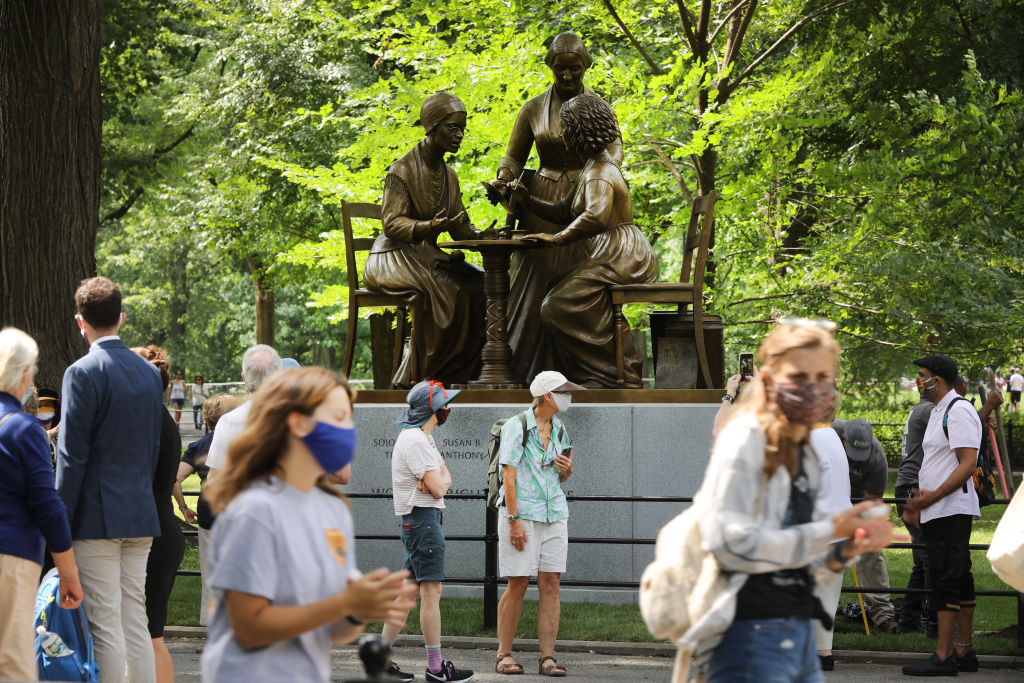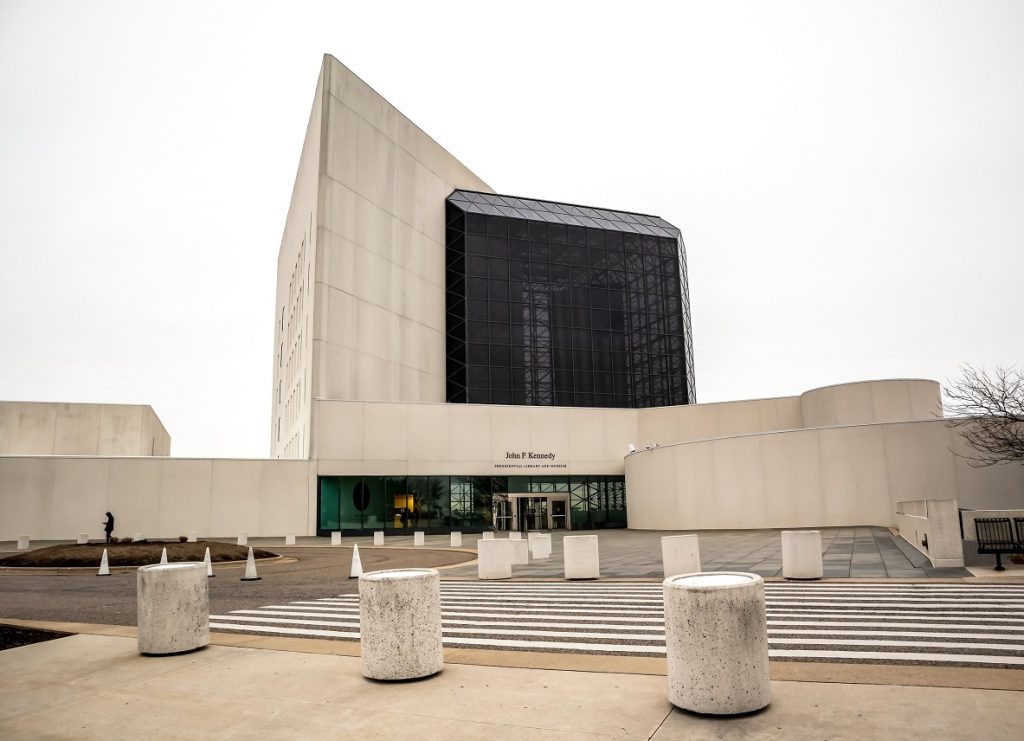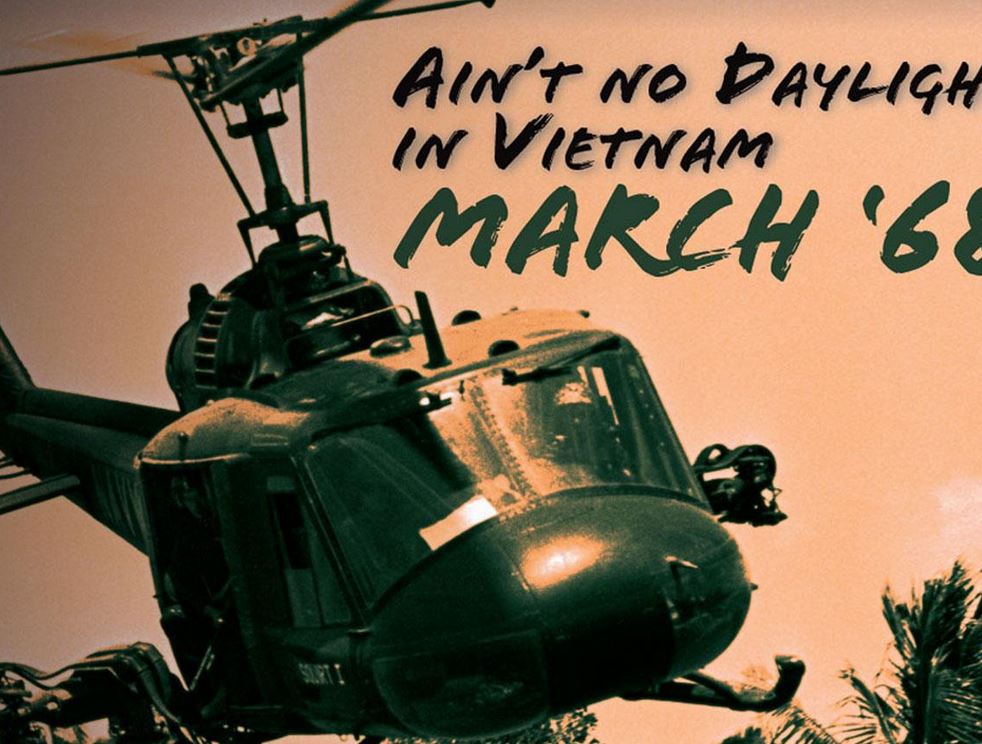The Presidential election is a teaching moment for kids

Visit a Presidential Library near you
By Eileen Ogintz
Tribune Content Agency
Taking the Kids
If only it were that easy.
The 15th Amendment to the U.S Constitution reads,“ The right of citizens of the United States to vote shall not be denied or abridged by the United States or by any state on account of race, color, or previous condition of servitude.” It was passed by Congress in 1869 and ratified by the states a year later.
Women didn’t get the vote until the 19th Amendment was ratified in 1920, giving American women the right to vote. If you are in New York, see the award-winning musical “SUFFS” about the women’s suffrage movement. Hillary Clinton and Malala Yousafzai are two of the show’s producers.
With the presidential election less than a month away – and Kamala Harris, a woman of color, running for the presidency, there’s no better time to reflect on how hard w omen and Blacks have fought for the right to vote and how in certain areas of the country there are still efforts to suppress their voices.

Voices and Votes: Democracy in America is a Smithsonian exhibit touring around the country through 2026. It currently is in the Cape Coral Lee County Public Library in Cape Coral, Florida, and Appalachian State University in Boone, North Carolina. The exhibit is based on one from the Smithsonian’s National Museum of American History; American Democracy: A Great Leap of Faith, which explores voting history and fundamental questions about what it means to be a citizen. (Explore the exhibition at home with a companion volume to the museum exhibition.)
At the Postal Museum, see Voting by Mail: Civil War to Covid-19. As far back as the Civil War, states provided military personnel with ways to vote while deployed.
The 15th amendment sparked division between white and Black suffrage activists. White women argued they were more qualified to vote than Black men while Black women believed voting rights for Black men was an important step toward suffrage for all Americans.

But just as there were efforts to keep Black men from voting in the segregated South, the same tactics were used to keep Black women from voting. It took the civil rights movement and the Voting Rights Act of 1965, which prohibits racial discrimination in voting, to secure the vote for those who had been historically barred from the ballot box.
Learn more at the National Museum of African American History and Culture’s online exhibit Make Good the Promises 150 Years and Counting, which chronicles the barriers to the ballot.
In Seneca Falls, New York, visit the Women’s Rights National Historic Park. It was the home of Elizabeth Cady Stanton, a leading suffragist who called the home where she lived with her husband and seven children from 1847 to 1862 the “Center of the Rebellion.” This is the place to learn about the 1848 Seneca Falls Convention that Stanton helped organize and the early years of the women’s rights movement.
Another good online source for families, as well as educators, is Teaching Resources for US Elections designed for students in grades 6 through 12 to help young people explore the role of elections, voting and civic participation in sustaining a democracy, including how to evaluate news – whether it is fact or fiction – in the digital age.

Learn what it was like once the election was over by visiting one of the many presidential homes around the country, as well as 22 presidential libraries.
In Boston, the John F. Kennedy Presidential Library and Museum is a top site for visitors, offering special family programming, a recreated Oval Office, an exhibit on the space program and more. The museum utilizes high-definition, large-screen projections, interactive displays, remastered films and original artifacts from the life and times of JFK to bring to life President Kennedy’s 1,000 days in office.

Many families include Mount Vernon, George Washington’s home, when they are visiting Washington, D.C., because it is so close. Besides touring the mansion, there is a special Enslaved People of Mount Vernon tour that highlights the lives of the African slaves who built, worked on and ran Mount Vernon.
On a hilltop outside Charlottesville, Virginia, sits Monticello, Thomas Jefferson’s home and plantation, which boasts glorious foliage right now. There’s a hands-on activity center and, in October, family friendly tours on weekends. There is also a “Slavery at Monticello: Life and Work on Mulberry Row” guide and an “ Exploring Monticello: A Guide for Young People” guide that might be useful during your visit. There’s also a guide on all of Jefferson’s gadgets, as he famously invented things, including a polygraph machine.

In New York’s Hudson Valley, you can visit Hyde Park, Franklin Delano Roosevelt’s home and Val-Kill, where Eleanor Roosevelt famously entertained some of the 20th century’s most influential world and civil rights leaders. It is the only national historic site dedicated to a first lady. There are more than 1,000 acres of gardens and trails – spectacular during fall and includes the nation’s first presidential library. The free National Park Services app offers interactive maps and self-guided activities to enhance your visit.
In Chicago, the Obama Presidential Center isn’t scheduled to open until 2026, but you can visit Abraham Lincoln’s home in Springfield, Illinois, the first and only home Abraham Lincoln owned. Learn about Lincoln’s experience as a father, husband and lawyer living in Springfield in the mid-19th century.
Also in the Midwest is the Harry S. Truman Library & Museum in Independence, Missouri, which recently completed a massive renovation. A new temporary exhibition, UPSET! Harry Truman and the 1948 Election, allows visitors to travel back in time to see how the most stunning surprise in U.S. presidential election history came about.

The George H.W. Bush Presidential Library & Museum is in College Station Texas, on the campus of Texas A&M University; The George W. Bush Presidential Library is in Dallas and explores the eight years he was in office, including exhibits on 9/11. The Lyndon B. Johnson Presidential Library is on the campus of UT-Austin. It’s only a couple of hundreds of miles on each leg of a triangle and you can visit them all!
Lots to learn – and think about – before Election Day.
(For more Taking the Kids, visit www.takingthekids.com and also follow TakingTheKids on Twitter, Facebook and Instagram where Eileen Ogintz welcomes your questions and comments. The fourth edition of The Kid’s Guide to New York City and the third edition of The Kid’s Guide to Washington D.C. are the latest in a series of 14 books for kid travelers published by Eileen.)
©2024 Eileen Ogintz. Distributed by Tribune Content Agency, LLC.
